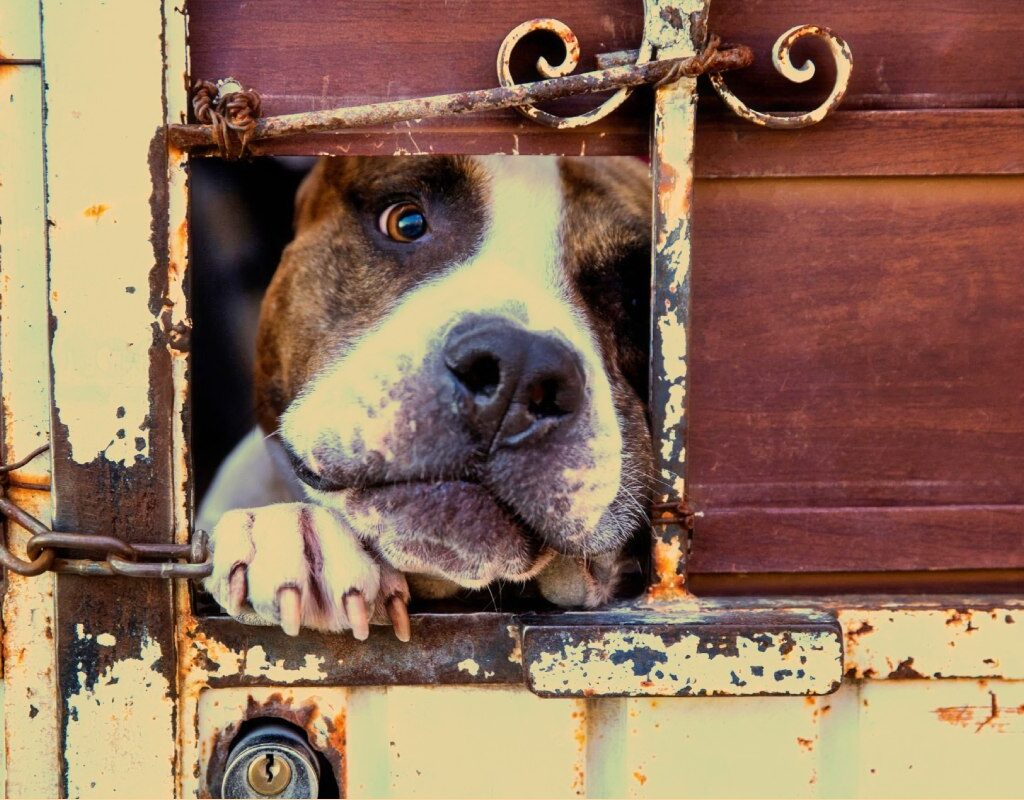The actions we commit against the most defenseless reveal much more than mere acts of cruelty. When delving into the mind of an animal abuser, we uncover a pattern of behavior that often has its roots in childhood and can project violently towards people.
The Grim Psychological Portrait of an Animal Abuser
As incredible as it may seem, the words of the Roman poet Ovid, who stated that “cruelty to animals teaches cruelty towards humans,” resonate with the same intensity two millennia later.
News headlines increasingly fill with chilling accounts of animals being burned, blinded, hanged, buried alive, mutilated or even painted for strange amusement or to alleviate boredom.
But these savage acts conceal a disturbing reality: the perpetrators are often psychologically and socially vulnerable individuals who seek to demonstrate their strength and courage through these horrific actions. They are frequently people aware of their own social, intellectual or cultural limitations.
By torturing a weaker creature, they experience, at least for a moment, the feeling of being powerful or, rather, of not being utterly helpless. Finding someone weaker is a mechanism they use to avoid feeling at the bottom of the social ladder.
Often, the origin of the problem lies in the early years of life. It is estimated that about 30% of violent acts against animals are committed by minors, usually in groups. Of these, 94% are male and 4% are under 12 years old.
The Alarming Statistics of Animal Abuse
Individuals with a history of animal abuse are five times more likely to commit domestic violence. Furthermore, it is alarming that approximately 20% of these cases occur within the family environment.
The family is the primary place where the human being develops, learns behaviors, emotions, feelings and acquires the traits that will characterize their personality. When abuse is normalized within the home, it is highly likely that the child will emulate that attitude.
Noted psychologist Mireia Leal Molina asserts:
“The reasons why a child may come to mistreat an animal vary: it could be due to a lack of empathy, having been a victim of abuse, maltreatment or abandonment; from lacking proper education that teaches them to recognize animals as living beings, albeit different; or finally, by imitating violent acts committed by their parents, even as a form of punishment to the child itself.”
Interaction with different beings plays a key role in human psychological development. Education in respect for animals is fundamental to the formation of concepts such as empathy, altruism and acceptance.
From Animal Cruelty to Personal Violence: A Disturbing Link
Numerous studies have shown that those capable of committing acts of cruelty towards animals are susceptible to exercising violence against human beings, especially the most vulnerable.
In 2002, scientists Gleyzer, Felthous and Holzer discovered a relationship between antisocial personality disorder and a history of animal cruelty.
A study including 96 adults charged with crimes showed that half had perpetrated severe acts of violence against animals. Indeed, former FBI agent Robert K. Ressler once stated, “Killers are often children who never learned that it’s wrong to gouge out a puppy’s eyes.”
Dr. Leal emphasizes:
“Not every individual who has mistreated animals will be a human abuser. However, almost all individuals who are human abusers have had episodes of animal abuse in their childhood, so it is a good predictor of future behavioral disorders.”
From Amending to Penalizing: A Deep Analysis of Current Legislation
In many cases, conduct disorder can be corrected but once it evolves into an antisocial personality disorder, the path becomes much more challenging and usually, only repression remains.
In Spain, Article 337 of the Penal Code punishes with up to 18 months in prison the mistreatment of an animal that causes death or severe injury, sexual exploitation and abandonment. However, going to jail for animal abuse is more the exception than the rule.
Education about respect for life and cruelty to animals is essential to overcome speciesism, that discrimination against beings that do not belong to one or more specified species.
This task requires involvement from both families and the school environment, where cruelty towards animals must be considered on par with cruelty towards people, not just a simple violation of property or norms.
This article was prepared from valuable contributions by Alberto Barbieri initially published in the La Vanguardia newspaper, with the aim of raising awareness about the issue of animal abuse.




